Books by Kirsten Paige

Cambridge University Press, 2026
Drawing together leading scholars in music studies and ecology, this volume offers accessible tre... more Drawing together leading scholars in music studies and ecology, this volume offers accessible treatments of overarching questions, representative repertoires, core concepts, and keywords from the field. Together, this work offers a comprehensive guide to the complex relationship between music and the environment that moves beyond disciplinary and regional boundaries. Although focused on music, this Companion also surveys environmental and climate issues, and considers creative responses and reactions to those issues with case studies of composers, performers, and activists from around the world in historical and contemporary contexts. The Cambridge Companion to Music and Environment speaks powerfully to music’s ability to help us comprehend the challenges facing our environment while also imagining a different future for our planet.
under contract; co-edited with Lonán Ó Briain

University of Chicago Press (forthcoming, 2025)
"Richard Wagner’s Political Ecology" begins from Wagner’s essay, “Art and Climate” (1850). In it,... more "Richard Wagner’s Political Ecology" begins from Wagner’s essay, “Art and Climate” (1850). In it, Wagner likens music drama to the climatic conditions of the cold, barren North and argues that his dramas would subsume spectators, transforming them into a unified German community with each passing breath. Richard Wagner’s Political Ecology traces Wagner’s climatic language from theory to practice, tracking its shapeshifting rhetorical, musical, and scenographic formulations. I argue that this pervading atmospheric cosmology enabled Wagner to figure music drama as immaterial instrument of political coercion, an intent registered with alarm by Friedrich Nietzsche and with enthusiasm by Joseph Goebbels. Wagner’s lofty ideals conceded their material relations to the earth as he transmuted his aerial images into belching, smoggy machines. I conclude by asking what the composer’s environmental imagination reveals about the relationship of operatic practices and institutions to our environmental emergency. My final chapter argues that, while Wagner may have been the most carbon-hungry composer of the last two centuries, he was no anomaly: instead, he is just one example of many in an energy (in)efficient, hot chronology of opera that demonstrates why opera companies must “go green.”
Articles & Chapters by Kirsten Paige
Keyboard Perspectives, 2025
This essay is in preparation for inclusion in the special issue of Keyboard Perspectives on "glob... more This essay is in preparation for inclusion in the special issue of Keyboard Perspectives on "global keyboard histories" that I am co-editing with Morton Wan.
David Trippett, ed., "Wagner in Context," Cambridge University Press, 2024
19th-Century Music, Vol. 45/1, 2021
Introduction to special issue, "Music and the Invention of Environment."
For the rest of the iss... more Introduction to special issue, "Music and the Invention of Environment."
For the rest of the issue, see https://online.ucpress.edu/ncm/issue/45/1
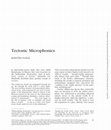
19th-Century Music, Vol. 45/1, 2021
“Tectonic Microphonics” explores the politics of seismologists’ use of the microphone to listen t... more “Tectonic Microphonics” explores the politics of seismologists’ use of the microphone to listen to the deep, elusive sounds of the Earth in the years around 1900. It argues that seismological representatives of three emerging nation-states and empires—Italy, Japan, and Britain—used the microphone to lay claim to elusive geophysical data, encrypted in fleeting, earthly sounds. It suggests that seismologists’ enhanced knowledge of the subterranean movements of the Earth, a purported consequence of their microphonic aurality, represented a form of geopolitical currency. Such powers of prediction were viewed as an important index of national security and scientific development: the microphone thus represented an opportunity for occupants of seismic geographies (like Italy and Japan) to overcome what Deborah Coen has referred to as the “deterministic geography of security and risk” that, for some geologists, reduced them to the status of “barbarians.” At the same time, this article demonstrates that valorizing the civilizing consequences of this form of technologically mediated aurality relied upon extractive ecologies of capitalism and exploitative human labor that were often obscured by scientific users and their global networks of collaborators and enablers. As the article’s concluding section shows, these activities came on the heels of the birth of one of the earliest ideas of the Anthropocene, circulated in the writings of an Italian geologist as a term for the agency of white, European, “steam-powered” men (a circumscribed Anthropos) over the Earth, its fossil resources, and its less-than-human laborers. This article concludes by arguing that the microphone established a standard of anthropogenic aurality fit for the birth of the age of the Anthropocene.
The Journal of the Royal Musical Association, Vol. 146/1 (Spring 2021): 1-34, 2021
This article explores the politics of performing Wagner outdoors, focusing on the Waldoper in Sop... more This article explores the politics of performing Wagner outdoors, focusing on the Waldoper in Sopot, Poland, and its operations under the Third Reich. Festival literature suggests that the Reich combined climatic deterministic logic with established open-air theatrical practice to implicate experiencing Wagnerian sounds outdoors as inculcating völkisch character in Poles, positioning the festival within the Reich’s imperial mission. However, this vision from ‘on high’ was undermined by bureaucratic disorganization and inefficiency, much like other Nazi artistic projects. The article concludes with a discussion of the post-war afterlives of the Waldoper and its attendant mythologies.
The Opera Quarterly, 2019

Winner: North American Society for Romanticism Graduate Essay Prize
In Richard Wagner’s 1850 ess... more Winner: North American Society for Romanticism Graduate Essay Prize
In Richard Wagner’s 1850 essay “Art and Climate,” the composer implicates climatic engagement as crucial to cultural and artistic progress. He critiques the relationship mankind had built with the natural world, arguing that civilization had developed counter to the deterministic influence of climate; instead of respecting nature, the vices of humanity had led it to live in opposition to beneficial climatic influences. Wagner casts his “artwork of the future” as “taking account of…the natural characteristics of [Germanic] native skies”; it would channel the Teutonic climate lost to civilization and, through exposure to it in the theater, engender a new social order. This essay explores the foundations of Wagner’s climatic determinism, their manifestations in his dramatic works and relationship to his atmospheric technologies for his theater in Bayreuth, Germany, and the didactic motivations behind these theories and practices.

For the past twenty-five years a key piece of evidence for an anti-Semitic subtext in Wagner’s Di... more For the past twenty-five years a key piece of evidence for an anti-Semitic subtext in Wagner’s Die Meistersinger has been identified in the Grimm Brothers’ anti-Semitic tale ‘The Jew in the Thorn-bush’ and a possible allusion to this in the text of Walther’s Act I ‘trial song’. This article argues that the passages in question are better explained with reference to a medieval poetic tradition still prevalent in nineteenth-century German culture involving the vocal contest between birds, paradigmatically the owl and the nightingale. Since the twelfth century, the owl
and the nightingale have debated the merits of high and low art, religious themes, social forms, poetic diction and more. The associations of pedantry and harsh, coarse vocal character with the figure of the owl maps readily onto the negative traits of Beckmesser, just as the contrasting associations of the melodious nightingale with springtime, courtship and ‘natural’ musicality align with traits of Wagner’s artist-hero, Walther von Stolzing. Rather than displacing the possible anti-Semitic reading of Beckmesser, however, this alternative reading of the Beckmesser–Walther antagonism through the lens of avian conflict or debate poetry relocates that reading within a broader discursive and figurative context, one that is more commensurate with the possible role of anti-Semitic subtexts within Wagner’s music dramas in general.

For the past twenty-five years a key piece of evidence for an anti-Semitic subtext in Wagner's Di... more For the past twenty-five years a key piece of evidence for an anti-Semitic subtext in Wagner's Die Meistersinger has been identified in the Grimm Brothers' anti-Semitic tale 'The Jew in the Thorn-bush' and a possible allusion to this in the text of Walther's Act I 'trial song'. This article argues that the passages in question are better explained with reference to a medieval poetic tradition still prevalent in nineteenth-century German culture involving the vocal contest between birds, paradigmatically the owl and the nightingale. Since the twelfth century, the owl and the nightingale have debated the merits of high and low art, religious themes, social forms, poetic diction and more. The associations of pedantry and harsh, coarse vocal character with the figure of the owl maps readily onto the negative traits of Beckmesser, just as the contrasting associations of the melodious nightingale with springtime, courtship and 'natural' musicality align with traits of Wagner's artist-hero, Walther von Stolzing. Rather than displacing the possible anti-Semitic reading of Beckmesser, however, this alternative reading of the Beckmesser-Walther antagonism through the lens of avian conflict or debate poetry relocates that reading within a broader discursive and figurative context, one that is more commensurate with the possible role of anti-Semitic subtexts within Wagner's music dramas in general.
Review Essays by Kirsten Paige

The Opera Quarterly, Vol. 37/1 (January), 2021
For three weeks in July 2015, the stage of Milan's Teatro alla Scala was a pulpit of climate scie... more For three weeks in July 2015, the stage of Milan's Teatro alla Scala was a pulpit of climate science. Giorgio Battistelli, Ian Burton, and Robert Carsen's CO 2-based on Al Gore's An Inconvenient Truth (2006)-places fictional climatologist David Adamson at center stage, where Adamson warns that greenhouse gas emissions are making the planet uninhabitable. In interviews about CO 2 , Battistelli explained that the theme of climate change was "not ideological, not religious, and not the usual [opera] plot. I was interested in finding a subject away from our cultures and that would address a global issue." 1 Climate activist Lucy Wood has suggested that projects like Battistelli's are important because "if [climate change] remains mere data people are literally blinded by it. So, people are able to file it away as something we don't have to deal with because it's not an immediate concern, because they don't feel the emotional, moral connection to it." 2 Contrary to Battistelli's and Wood's claims, though climate change is, as E. O. Wilson has ominously proclaimed, a "planetary killer" and therefore an issue of "species" concern, its conditions of possibility and presentation in oral and written media are nonetheless deeply bound to social and racial ideologies, and to the histories of culture and aesthetics. 3 Anthropogenic environmental change is not even a truly new topic for operatic treatment: its introduction to the opera house-and to opera criticism-might be traced to Richard Wagner's Der Ring des Nibelungen (1876). George Bernard Shaw first alluded to such a reading in 1898 when, in Thomas Grey's words, Shaw characterized Wagner's Ring as a Marxist tale of capitalist economics, "the basis of a potential environmental parable," however inconsistent. 4 In the many years since, several directors have offered ecocritical readings of the tetralogy and its industrial-capitalist tropes, most recent among them Stephen Wadsworth and his "green" Ring, premiered at the Seattle Opera in 2009 and revived in 2013. 5 Wagner's works bear a timely eco-politics that transcends the composer's musical and plot devices; they are instead firmly lodged in the Romantic aesthetic axioms that authorized them, as well as climate-themed successors such as CO 2. In this review essay, I use CO

The Journal of the American Musicological Society, Vol. 73/2 (Summer): 405-10., 2020
In the book's conclusion, André envisions a broadening audience for opera performance in the Unit... more In the book's conclusion, André envisions a broadening audience for opera performance in the United States and South Africa without claiming naively that opera is for everyone. She admits that there are many hurdles to be overcome when attempting to make opera more accessible to those who have historically been excluded from this artistic tradition. Not even all-black casts and plots relevant to black experiences and histories will change the fact that opera is still expensive, usually exclusionary, often intimidating, and thus viewed as elite art. Yet opera can also be relevant, provocative, empowering, and ripe with potential for critical inquiry, activism, and even social change, according to André. What does it mean to stage a trans Carmen in prison? How about a countertenor singing the role? These are components of contemporary versions of Bizet's warhorse that lead her to posit that opera may be approaching a new frontier. These reinventions can communicate novel ideas about race and gender, because the contemporary performance engages with the historical performance practice of the work. André convincingly argues that while historical knowledge is essential, attempting to recreate the original composer's vision for the work should not always be the goal. She ends the book optimistic about the potential for "engaged musicology," and I hope she is right about approaching a new frontier for opera. I hope, too, that we will have need of a sequel to this book and that Naomi André will write it.
MLA Notes: Journal of the Music Library Association, Jun 2014
Special Issues by Kirsten Paige

Cultural Politics, 2026
Special issue of "Cultural Politics" on music, energy, and infrastructure, co-edited with Thomas ... more Special issue of "Cultural Politics" on music, energy, and infrastructure, co-edited with Thomas Irvine. Authors: Jason Moore, Laura Vasilyeva, Jonathan Hicks, Thomas Irvine, Christopher Smith, Ryan Gourley, Kyle Devine, and myself.
This special issue asks readers to think about histories of music and carbon. Our point of departure is less the carbon footprint of auditory media and materials, a matter of crucial importance addressed recently by work such as Kyle Devine’s 2019 Decomposed: The Political Ecology of Music and the volume of essays he co-edited with Alexandrine Boudreault-Fournier, Audible Infrastructures: Music, Sound, Media (2021). Instead, we will dwell on the past, present, and, especially, future of changing relationships between the harvesting and consumption of energy, the infrastructure required to sustain these, and material conditions of human musical practices, including creative practices normally treated as matters of “aesthetics.”

Keyboard Perspectives, 2025
co-edited with Morton Wan. Authors: Fanny Gribensksi, David Irving, Nicholas Mathew, Kira Thurman... more co-edited with Morton Wan. Authors: Fanny Gribensksi, David Irving, Nicholas Mathew, Kira Thurman, Annette Richards, and more.
This special issue of Keyboard Perspectives seeks to unravel global networks surrounding the dissemination, construction, and significance of keyboard instruments, exposing them as global artifacts bearing witness to musical, epistemological, scientific, political, and material mobilities. We imagine contributors treating instruments as not only proclaiming music’s connections to the wider world, but also as intricately woven into networks of commodity trade, technological innovation, exploitative labor practices, imperial infrastructures, systems of colonial power, and forms of resource extraction.
This volume asks: how might keyboards—as versatile objects of music theory and history, pedagogy and performance—foster an expanded understanding of musical cultures and practices in a global context? How and why can keyboard instruments serve efforts to “remap” music history, dismantling polarities of North and South, East and West, metropole and periphery?
19th-Century Music, 2021
Note: I have only uploaded the Table of Contents here.
For full issue, see: https://online.ucpre... more Note: I have only uploaded the Table of Contents here.
For full issue, see: https://online.ucpress.edu/ncm/issue/45/1
Guest-edited special issue, 19th-Century Music (Summer 2021).
"Music and the Invention of Environment"
Kirsten Paige, Guest-Editor
Contributors: Alexander Rehding, Fanny Gribenski, Peter McMurray, James Q. Davies, Jonathan Hicks, and Kirsten Paige.
CV by Kirsten Paige
Conference Papers by Kirsten Paige
Presented at the 150th Anniversary Meeting of the Royal Musical Association (September 2024)



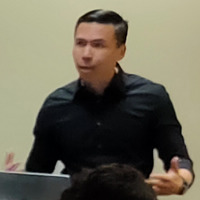
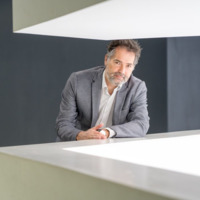
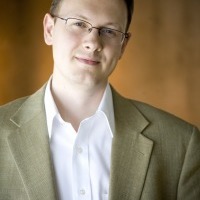

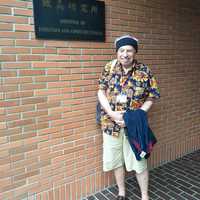
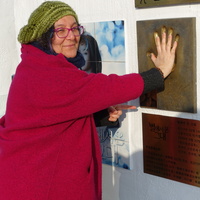


Uploads
Books by Kirsten Paige
under contract; co-edited with Lonán Ó Briain
Articles & Chapters by Kirsten Paige
For the rest of the issue, see https://online.ucpress.edu/ncm/issue/45/1
In Richard Wagner’s 1850 essay “Art and Climate,” the composer implicates climatic engagement as crucial to cultural and artistic progress. He critiques the relationship mankind had built with the natural world, arguing that civilization had developed counter to the deterministic influence of climate; instead of respecting nature, the vices of humanity had led it to live in opposition to beneficial climatic influences. Wagner casts his “artwork of the future” as “taking account of…the natural characteristics of [Germanic] native skies”; it would channel the Teutonic climate lost to civilization and, through exposure to it in the theater, engender a new social order. This essay explores the foundations of Wagner’s climatic determinism, their manifestations in his dramatic works and relationship to his atmospheric technologies for his theater in Bayreuth, Germany, and the didactic motivations behind these theories and practices.
and the nightingale have debated the merits of high and low art, religious themes, social forms, poetic diction and more. The associations of pedantry and harsh, coarse vocal character with the figure of the owl maps readily onto the negative traits of Beckmesser, just as the contrasting associations of the melodious nightingale with springtime, courtship and ‘natural’ musicality align with traits of Wagner’s artist-hero, Walther von Stolzing. Rather than displacing the possible anti-Semitic reading of Beckmesser, however, this alternative reading of the Beckmesser–Walther antagonism through the lens of avian conflict or debate poetry relocates that reading within a broader discursive and figurative context, one that is more commensurate with the possible role of anti-Semitic subtexts within Wagner’s music dramas in general.
Review Essays by Kirsten Paige
Special Issues by Kirsten Paige
This special issue asks readers to think about histories of music and carbon. Our point of departure is less the carbon footprint of auditory media and materials, a matter of crucial importance addressed recently by work such as Kyle Devine’s 2019 Decomposed: The Political Ecology of Music and the volume of essays he co-edited with Alexandrine Boudreault-Fournier, Audible Infrastructures: Music, Sound, Media (2021). Instead, we will dwell on the past, present, and, especially, future of changing relationships between the harvesting and consumption of energy, the infrastructure required to sustain these, and material conditions of human musical practices, including creative practices normally treated as matters of “aesthetics.”
This special issue of Keyboard Perspectives seeks to unravel global networks surrounding the dissemination, construction, and significance of keyboard instruments, exposing them as global artifacts bearing witness to musical, epistemological, scientific, political, and material mobilities. We imagine contributors treating instruments as not only proclaiming music’s connections to the wider world, but also as intricately woven into networks of commodity trade, technological innovation, exploitative labor practices, imperial infrastructures, systems of colonial power, and forms of resource extraction.
This volume asks: how might keyboards—as versatile objects of music theory and history, pedagogy and performance—foster an expanded understanding of musical cultures and practices in a global context? How and why can keyboard instruments serve efforts to “remap” music history, dismantling polarities of North and South, East and West, metropole and periphery?
For full issue, see: https://online.ucpress.edu/ncm/issue/45/1
Guest-edited special issue, 19th-Century Music (Summer 2021).
"Music and the Invention of Environment"
Kirsten Paige, Guest-Editor
Contributors: Alexander Rehding, Fanny Gribenski, Peter McMurray, James Q. Davies, Jonathan Hicks, and Kirsten Paige.
CV by Kirsten Paige
Conference Papers by Kirsten Paige
under contract; co-edited with Lonán Ó Briain
For the rest of the issue, see https://online.ucpress.edu/ncm/issue/45/1
In Richard Wagner’s 1850 essay “Art and Climate,” the composer implicates climatic engagement as crucial to cultural and artistic progress. He critiques the relationship mankind had built with the natural world, arguing that civilization had developed counter to the deterministic influence of climate; instead of respecting nature, the vices of humanity had led it to live in opposition to beneficial climatic influences. Wagner casts his “artwork of the future” as “taking account of…the natural characteristics of [Germanic] native skies”; it would channel the Teutonic climate lost to civilization and, through exposure to it in the theater, engender a new social order. This essay explores the foundations of Wagner’s climatic determinism, their manifestations in his dramatic works and relationship to his atmospheric technologies for his theater in Bayreuth, Germany, and the didactic motivations behind these theories and practices.
and the nightingale have debated the merits of high and low art, religious themes, social forms, poetic diction and more. The associations of pedantry and harsh, coarse vocal character with the figure of the owl maps readily onto the negative traits of Beckmesser, just as the contrasting associations of the melodious nightingale with springtime, courtship and ‘natural’ musicality align with traits of Wagner’s artist-hero, Walther von Stolzing. Rather than displacing the possible anti-Semitic reading of Beckmesser, however, this alternative reading of the Beckmesser–Walther antagonism through the lens of avian conflict or debate poetry relocates that reading within a broader discursive and figurative context, one that is more commensurate with the possible role of anti-Semitic subtexts within Wagner’s music dramas in general.
This special issue asks readers to think about histories of music and carbon. Our point of departure is less the carbon footprint of auditory media and materials, a matter of crucial importance addressed recently by work such as Kyle Devine’s 2019 Decomposed: The Political Ecology of Music and the volume of essays he co-edited with Alexandrine Boudreault-Fournier, Audible Infrastructures: Music, Sound, Media (2021). Instead, we will dwell on the past, present, and, especially, future of changing relationships between the harvesting and consumption of energy, the infrastructure required to sustain these, and material conditions of human musical practices, including creative practices normally treated as matters of “aesthetics.”
This special issue of Keyboard Perspectives seeks to unravel global networks surrounding the dissemination, construction, and significance of keyboard instruments, exposing them as global artifacts bearing witness to musical, epistemological, scientific, political, and material mobilities. We imagine contributors treating instruments as not only proclaiming music’s connections to the wider world, but also as intricately woven into networks of commodity trade, technological innovation, exploitative labor practices, imperial infrastructures, systems of colonial power, and forms of resource extraction.
This volume asks: how might keyboards—as versatile objects of music theory and history, pedagogy and performance—foster an expanded understanding of musical cultures and practices in a global context? How and why can keyboard instruments serve efforts to “remap” music history, dismantling polarities of North and South, East and West, metropole and periphery?
For full issue, see: https://online.ucpress.edu/ncm/issue/45/1
Guest-edited special issue, 19th-Century Music (Summer 2021).
"Music and the Invention of Environment"
Kirsten Paige, Guest-Editor
Contributors: Alexander Rehding, Fanny Gribenski, Peter McMurray, James Q. Davies, Jonathan Hicks, and Kirsten Paige.
Register here: https://forms.gle/PS6KrdDfAyVW4qTk8
In 1898, George Bernard Shaw interpreted Wagner's Ring as a "toxic discourse" of nineteenth-century capitalism. Wagner's steam effects, powered by locomotives, materially captured the capitalist and industrialist impulses lying behind the tetralogy's primordial ecologies that, in turn, signified Wagnerian aesthetic ideations. Patrice Chéreau presented a Shavian Ring at Bayreuth in 1976, while Stephen Wadsworth staged a "green" Ring in Seattle in 2009. Stephen Langridge conceived the first sustainable Ring in Göteborg in 2019-21, exposing the tetralogy, Wagnerian thought, and even the opera house, as artifacts of industrialism and the Anthropocene.
This paper asks what it means to think "Anthropocenically" about opera and the opera house, and how the Ring and its critical history instructively entwine opera with Anthropocenic conditions of possibility. Drawing on production footage, critical responses, and directorial descriptions, I argue that the Ring could be read as diagnosing opera's Anthropocenic debts: Bronislaw Szerszinsky and James Davies argue that the false dichotomy of industrialism and Romantic "nature worship" underlies the Anthropocene's material and aesthetic conditions of possibility. Chéreau, Wadsworth, and Langridge's Ring cycles make visible aspects of Wagner's tale that "show the consequences of using natural resources of personal power," each modulating the Anthropocenic dialectic of nature, capital, and power. Reifying strains of Wagnerian eco-aesthetics within vernaculars of eco-power, these productions could be read as lodging not just the Ring, but dominant conceptions of "the stuff we call music," within the conditions of the Anthropocene.
I begin by placing Chéreau's presentation of the Ring's Anthropocenic energy politics into dialogue with Wadsworth's "green" Wagnerism, an expression of "nature worship" gone wrong. These productions appear contradictory but, as Szerszinsky and Davies imply, the conflict of industry and nature at the core of Wagnerian thought and practice is native to the Anthropocene's conditions. Next, I show that Langridge's production thematizes this contradiction in an attempt to resolve it, embedding a sustainable alternative to Wagnerian materiality within the tetralogy's capitalist and "green" interpretive possibilities. I conclude by arguing that he exposes the Ring's Anthropocenic debts as less of a Wagnerian phenomenon than one of operatic ontology, craft, and criticism.
When geologists described these activities, what contemporary mythologies of nature and culture did they invoke under the guise of reporting scientific methods and data? I first approach this question by exploring geologists’ descriptions of their methods of sound retrieval for scientific periodicals and empirical texts on the physics of earthquakes. I show that scientists’ accounts of obtaining terrestrial sounds—waiting quietly underground for the earth to reveal its secrets—mirror Romantic tales of subterranean exploration, in which the depths provide knowledge to underground travelers. By describing their methods in this way, geologists cast the microphone not as scientific instrument but as mediator of earthly mysteries. Carolyn Abbate has identified a similar claim in recent histories of the microphone, that it reveals “epistemic truths.” I argue that, today, this assertion perpetuates the Romantic discourses that underwrote accounts of geologists’ microphonic “excavations.”
But these sounds were not always associated with nature’s “secrets.” In scientific bulletins, geologists often used sonic indexes of industrial modernity to describe these sounds—“musketry reports,” “metallic,” “bell-like”—and attempted to reproduce them in their kitchens using household appliances. My paper ends by asking why, when the earth spoke, it sounded like industry. Since these sounds would not have existed (to human ears) without this technology, I argue that geologists registered them as “inseparable from technology [and modernity] itself,” as Emily Thompson has argued of aural media, establishing their pursuit of earthly sounds as a distinctly modern cultural process. Above ground, tectonic microphonics was a product of metallic modernity—but below, it was just the opposite, a Romantic search for earthly secrets and insights into “deep time.”
Around the turn of the century, Wagner’s treatment of environmental discourses in prose and on stage had been ventriloquized by individuals and organizations that appropriated Wagner’s ideas in the service of their green agendas. Contributors to British and German anti-vivisection periodicals alike regarded Wagner as “their” composer, finding common cause not only in the composer’s statements about animal rights but also in the environmentalist symbolism they discerned in his dramas. At this time, Wagner’s festival in Bayreuth also hosted groups of enthusiastic visitors from popular back-to-nature retreats, like Ascona, Switerzland’s Monte Verità where natural sites were renamed for landmarks in Wagner’s operas. This appropriation has continued in recent years: stagings of The Ring informed by environmental thinking have appeared around the world, including Patrice Chéreau’s centenary Ring at Bayreuth and the Seattle Opera’s 2009 so-called “green” Ring.
Building on Romantic environmentalism, the composer certainly did implicate nature as precious and worthy of protection, but only because he saw it as a cultural stronghold for Germans (and only Germans). I argue in this paper that what goes unremarked in historical and more recent responses to Wagner’s ecological writings and dramas is an ironic denial of the discriminatory ideals that made his and his contemporaries’ ideologies of nature, culture, and nation possible. Rather than continuing to attempt to de-fang Wagnerian ecology, I suggest that it might be more productive to focus on what Wagner’s ethically compromised texts and dramas can do for understanding the social impact of environmentalism in and out of a historical frame: when the critical lens is adjusted in this way, Wagner’s interventions sharply reveal the continued effects of environmental action on precarious populations and how environmentalism, in Wagner’s day and in ours, often re-inscribes alterity.
Critical reviews and festival guides published shortly after the Waldoper’s 1909 opening suggest that this stage initially functioned like outdoor theaters elsewhere in Europe: its diverse repertoire, selected for nearby Danzig’s German-speaking majority, was staged with minimal dramaturgical intervention, the forest functioning as part of staged works’ realism. After successful performances of Siegfried in 1922, the theater became devoted to performing only Wagner. Following Hitler’s annexation of Danzig, the Waldoper was absorbed into the Reich’s propaganda machine and advertised by Joseph Goebbels as the Reich’s “most important theatrical project” for its “cultural mission.”
But, at this festival, the forest held more than a dramaturgical function. As SS Forestry Minister Hermann Goering explained, at the Waldoper, “the hearts of the Volk biologically resonated” with nature and with its “atmospheric reconstruction,” Wagnerian soundscapes. Wagner understood the German forest, Goering argued, and experiencing his music “im Wald” would naturally inspire “national character” in spectators, including in Polish visitors. Under the Third Reich, the Waldoper transformed from regional theater to social laboratory where, instead of merely entertaining audiences, the experience of German art and nature was intended to “activate” a new, Aryan social order. As I show in this essay, exploring the history of open-air theater in Germany provides unique insight into how established theatrical practices and discourses of nature were taken together and repurposed under the Third Reich to serve their imperialist mission.
https://www.youtube.com/watch?v=9alnILH_ChY&ab_channel=DetroitOperaHouse
This podcast hosts conversations about the ideas that disrupt and transform the performing arts. Each episode features an interview with an artist or performing arts scholar that delves into how innovators challenge the boundaries of their art forms. Interdisciplinary artists and work, such as opera, music theater, multimedia performance art, and dance theater; cross-cultural perspectives and historically marginalized voices are in focus.
Hosted by director Jennifer Williams
Coordinated by Kirsten Paige, Andrew Chung, Gabrielle Cornish, Megan Steigerwald Ille, Lee Veeraraghavan, and Maria Fantinato G Siqueria